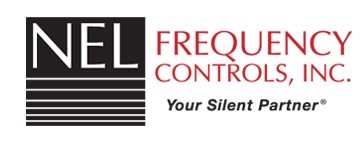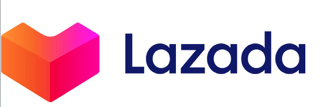Automotive Carbon Fiber Materials Market Status and Trend Analysis 2017-2026
- Report Code : 99S2214191
- Published On: Dec, 2020
- Category : Automotive & Transportation
- Pages : 87
-
Summary
Further key aspects of the report indicate that:
Chapter 1: Research Scope: Product Definition, Type, End-Use & Methodology
Chapter 2: Global Industry Summary
Chapter 3: Market Dynamics
Chapter 4: Global Market Segmentation by region, type and End-Use
Chapter 5: North America Market Segmentation by region, type and End-Use
Chapter 6: Europe Market Segmentation by region, type and End-Use
Chapter 7: Asia-Pacific Market Segmentation by region, type and End-Use
Chapter 8: South America Market Segmentation by region, type and End-Use
Chapter 9: Middle East and Africa Market Segmentation by region, type and End-Use.
Chapter 10: Market Competition by Companies
Chapter 11: Market forecast and environment forecast.
Chapter 12: Industry Summary.
The global Automotive Carbon Fiber Materials market has the potential to grow with xx million USD with growing CAGR in the forecast period from 2021f to 2026f.
Based on the type of product, the global Automotive Carbon Fiber Materials market segmented into
Thermosetting Type
Thermoplastics Type
Based on the end-use, the global Automotive Carbon Fiber Materials market classified into
Roof Panel
Body Panel
Hood
Chassis
Based on geography, the global Automotive Carbon Fiber Materials market segmented into
North America [U.S., Canada, Mexico]
Europe [Germany, UK, France, Italy, Rest of Europe]
Asia-Pacific [China, India, Japan, South Korea, Southeast Asia, Australia, Rest of Asia Pacific]
South America [Brazil, Argentina, Rest of Latin America]
Middle East & Africa [GCC, North Africa, South Africa, Rest of Middle East and Africa]
And the major players included in the report are
Toray
Mitsubishi Rayon
Teijin
SGL
Hexcel
-
With tables and figures helping analyze worldwide Automotive Carbon Fiber Materials market, this research provides key statistics on the state of the industry and is a valuable source of guidance and direction for companies and individuals interested in the market.
1 RESEARCH SCOPE1.1 Research Product Definition
1.2 Research Segmentation
1.2.1 Product Type
1.2.2 Main product Type of Major Players1.3 Demand Overview
1.4 Research Methodology
2 GLOBAL AUTOMOTIVE CARBON FIBER MATERIALS INDUSTRY2.1 Summary about Automotive Carbon Fiber Materials Industry
2.2 Automotive Carbon Fiber Materials Market Trends
2.2.1 Automotive Carbon Fiber Materials Production & Consumption Trends
2.2.2 Automotive Carbon Fiber Materials Demand Structure Trends2.3 Automotive Carbon Fiber Materials Cost & Price
3 MARKET DYNAMICS3.1 Manufacturing & Purchasing Behavior in 2020
3.2 Market Development under the Impact of COVID-19
3.2.1 Drivers
3.2.2 Restraints
3.2.3 Opportunity
3.2.4 Risk
4 GLOBAL MARKET SEGMENTATION4.1 Region Segmentation (2017 to 2021f)
4.1.1 North America (U.S., Canada and Mexico)
4.1.2 Europe (Germany, UK, France, Italy, Rest of Europe)
4.1.3 Asia-Pacific (China, India, Japan, South Korea, Southeast Asia, Australia, Rest of Asia Pacific)
4.1.4 South America (Brazil,, Argentina, Rest of Latin America)
4.1.5 Middle East and Africa (GCC, North Africa, South Africa, Rest of Middle East and Africa)4.2 Product Type Segmentation (2017 to 2021f)
4.2.1 Thermosetting Type
4.2.2 Thermoplastics Type4.3 Consumption Segmentation (2017 to 2021f)
4.3.1 Roof Panel
4.3.2 Body Panel
4.3.3 Hood
4.3.4 Chassis
5 NORTH AMERICA MARKET SEGMENT5.1 Region Segmentation (2017 to 2021f)
5.1.1 U.S.
5.1.2 Canada
5.1.3 Mexico5.2 Product Type Segmentation (2017 to 2021f)
5.2.1 Thermosetting Type
5.2.2 Thermoplastics Type5.3 Consumption Segmentation (2017 to 2021f)
5.3.1 Roof Panel
5.3.2 Body Panel
5.3.3 Hood
5.3.4 Chassis5.4 Impact of COVID-19 in North America
6 EUROPE MARKET SEGMENTATION6.1 Region Segmentation (2017 to 2021f)
6.1.1 Germany
6.1.2 UK
6.1.3 France
6.1.4 Italy
6.1.5 Rest of Europe6.2 Product Type Segmentation (2017 to 2021f)
6.2.1 Thermosetting Type
6.2.2 Thermoplastics Type6.3 Consumption Segmentation (2017 to 2021f)
6.3.1 Roof Panel
6.3.2 Body Panel
6.3.3 Hood
6.3.4 Chassis6.4 Impact of COVID-19 in Europe
7 ASIA-PACIFIC MARKET SEGMENTATION7.1 Region Segmentation (2017 to 2021f)
7.1.1 China
7.1.2 India
7.1.3 Japan
7.1.4 South Korea
7.1.5 Southeast Asia
7.1.6 Australia
7.1.7 Rest of Asia Pacific7.2 Product Type Segmentation (2017 to 2021f)
7.2.1 Thermosetting Type
7.2.2 Thermoplastics Type7.3 Consumption Segmentation (2017 to 2021f)
7.3.1 Roof Panel
7.3.2 Body Panel
7.3.3 Hood
7.3.4 Chassis7.4 Impact of COVID-19 in Europe
8 SOUTH AMERICA MARKET SEGMENTATION8.1 Region Segmentation (2017 to 2021f)
8.1.1 Brazil
8.1.2 Argentina
8.1.3 Rest of Latin America8.2 Product Type Segmentation (2017 to 2021f)
8.2.1 Thermosetting Type
8.2.2 Thermoplastics Type8.3 Consumption Segmentation (2017 to 2021f)
8.3.1 Roof Panel
8.3.2 Body Panel
8.3.3 Hood
8.3.4 Chassis8.4 Impact of COVID-19 in Europe
9 MIDDLE EAST AND AFRICA MARKET SEGMENTATION9.1 Region Segmentation (2017 to 2021f)
9.1.1 GCC
9.1.2 North Africa
9.1.3 South Africa
9.1.4 Rest of Middle East and Africa9.2 Product Type Segmentation (2017 to 2021f)
9.2.1 Thermosetting Type
9.2.2 Thermoplastics Type9.3 Consumption Segmentation (2017 to 2021f)
9.3.1 Roof Panel
9.3.2 Body Panel
9.3.3 Hood
9.3.4 Chassis9.4 Impact of COVID-19 in Europe
10 COMPETITION OF MAJOR PLAYERS10.1 Brief Introduction of Major Players
10.1.1 Toray
10.1.2 Mitsubishi Rayon
10.1.3 Teijin
10.1.4 SGL
10.1.5 Hexcel10.2 Automotive Carbon Fiber Materials Sales Date of Major Players (2017-2020e)
10.2.1 Toray
10.2.2 Mitsubishi Rayon
10.2.3 Teijin
10.2.4 SGL
10.2.5 Hexcel10.3 Market Distribution of Major Players
10.4 Global Competition Segmentation
11 MARKET FORECAST11.1 Forecast by Region
11.2 Forecast by Demand
11.3 Environment Forecast
11.3.1 Impact of COVID-19
11.3.2 Geopolitics Overview
11.3.3 Economic Overview of Major Countries
12 REPORT SUMMARY STATEMENT
-
The Automotive Carbon Fiber Materials Market has been segregated into various crucial divisions including applications, types, and regions. Each market segment is intensively studied in the report contemplating its market acceptance, worthiness, demand, and growth prospects. The segmentation analysis will help the client to customize their marketing approach to have a better command of each segment and to identify the most prospective customer base.
Report Objectives / Segmentation Covered :
By Companies / players:
By Regions:
By Type:
By Application:
Frequently asked questions(FAQ's):
As manufacturers prepare to scale up, Automotive Carbon Fiber Materials companies must be clear and transparent about the impact of such volatility on the balance sheet.
In recent years, the Automotive Carbon Fiber Materials Market has grown at an incredible rate. From 2025 to 2030, the market is expected to grow at a CAGR of yy%.
In addition to the Automotive Carbon Fiber Materials Market share analysis by competitors, the report also includes chapters on the HHI Index, CR4, and CR8 to characterize the concentration rate and competitive character of the Automotive Carbon Fiber Materials Market.
The Automotive Carbon Fiber Materials analysis provides high-level qualitative commentary on market dynamics, including information on growth drivers, influential trends, challenges, and opportunities.















